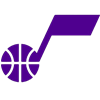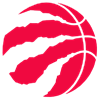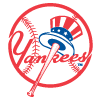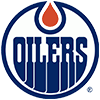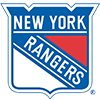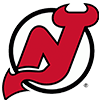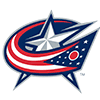I'm a maroon. Peter Kreutzer solicited Picks and Pans for his (returning) Fantasy Baseball Guide, and I kept procrastinating, figuring I'd send them tomorrow. Well, tomorrow never came. I feel badly, but Peter always recruits a who's who of the industry for the feature (my favorite of any of the magazines) so they'll be fine.
Instead, I'll share my picks and pans here. I likely wouldn't have sent all of these in, and the accompanying blurb would have been short and pithy. In full disclosure, a few are the RotoWire player outlooks I wrote. With that, here are my picks and pans.
Hitting Picks
Baez's move to Detroit is an under-the-radar great fit for his fantasy potential, assuming he makes a seamless transition. Comerica Park reduces strikeouts by eight percent while it helps hits. It also diminishes walks, but with Baez's already low BB rate, the drop is insignificant. Another benefit is Detroit demonstrated a penchant for running last season, finishing tied for the seventh-most steals in the league. Baez's lack of patience and high chase rate will continue to subject his numbers to the whims of Lady Luck, but there's profit potential if the market fails to account for the improved hitting environment.
Seager exhibited a big uptick in both groundball and flyball average exit velocity last season, indicating an increase in bat speed rather than him simply joining the launch angle revolution. It could be health or improved pitch recognition. Even so, based on
I'm a maroon. Peter Kreutzer solicited Picks and Pans for his (returning) Fantasy Baseball Guide, and I kept procrastinating, figuring I'd send them tomorrow. Well, tomorrow never came. I feel badly, but Peter always recruits a who's who of the industry for the feature (my favorite of any of the magazines) so they'll be fine.
Instead, I'll share my picks and pans here. I likely wouldn't have sent all of these in, and the accompanying blurb would have been short and pithy. In full disclosure, a few are the RotoWire player outlooks I wrote. With that, here are my picks and pans.
Hitting Picks
Baez's move to Detroit is an under-the-radar great fit for his fantasy potential, assuming he makes a seamless transition. Comerica Park reduces strikeouts by eight percent while it helps hits. It also diminishes walks, but with Baez's already low BB rate, the drop is insignificant. Another benefit is Detroit demonstrated a penchant for running last season, finishing tied for the seventh-most steals in the league. Baez's lack of patience and high chase rate will continue to subject his numbers to the whims of Lady Luck, but there's profit potential if the market fails to account for the improved hitting environment.
Seager exhibited a big uptick in both groundball and flyball average exit velocity last season, indicating an increase in bat speed rather than him simply joining the launch angle revolution. It could be health or improved pitch recognition. Even so, based on his average flyball distance, Seager was deprived of around seven long balls. Complicating matters is a new venue. Dodgers Stadium is a pitcher's park, but it significantly elevates left-handed power, so the move to Globe Life Field (at least on paper) should cost Seager some four-baggers. However, if he can manage to loft more batted balls without losing flyball average exit velocity, there is some serious power upside here. The overall pitching in the AL West also isn't as skilled as the NL West, though Seager won't enjoy nine or 10 games in Colorado. The misperception Dodgers Stadium suppresses power could work in the market's favor as many will assume Seager hits more dingers in the new venue, and he may anyway, due to regression correcting last season's bad luck. Don't be afraid to pay market price since there's another power level possible if Seager can loft more batted balls.
Reynolds is a good example of not blindly drafting a rank nor bidding to a computer-generated price unless you want what he offers, as much of Reynolds' production comes from batting average. It's not an empty BA, as he has average power and will sneak in a handful of bags, but you're paying for solid plate discipline and a batted ball profile conducive to supporting a high BABIP. His component exit velocities and launch angle indicate an uppercut stroke, but not an exaggerated one. He's a switch hitter with 88th percentile sprint speed, both of which help his BABIP as well. From a game theory perspective, it's common knowledge that trusting one player for your speed is risky. Relying on one player as a batting average ballast is equally tenuous. Some unfortunate BABIP luck and your average is low, plus you're short counting stats from that roster spot. That said, Reynolds' skill set, on paper, is reliable and trustworthy.
Muncy has always sported an above-average flyball average exit velocity, but last season was extreme at 97.2 mph, tied for 16th highest among qualified hitters. The fact he was coming off such a poor pandemic season makes it even more compelling. Not to mention, Muncy's average flyball distance portended 39 homers, compared to the 36 he actually hit out of the yard. In cases like this, there are likely two causes for the bump in FB AEV. Either the batter hits everything harder or he adds loft to his swing, in which case groundball average exit velocity suffers. With Muncy, the bump appears to be more from bat speed since his groundball average exit velocity remained high. Maybe it's obvious but 2020 is the outlier, and if Muncy maintains last season's bat speed, he has 40-HR upside based on being a smidge unlucky last season.
Reyes' flyball average exit velocity ranked eighth highest among hitters with at least 450 plate appearances. However, his groundball rate was second highest among those with at least a 97 mph flyball average exit velocity. Reyes hits everything hard, but he doesn't loft the ball enough to take full advantage of his prodigious power. Sure, the grounders prop up his BABIP, but trading a few singles for balls clearing the fence would be a no-brainer for fantasy investors. The problem is Reyes already whiffs at an accelerated rate, and adding uppercut to his swing would invite even more swinging strikes since the bat is in the hitting zone for less time. Reyes missed several weeks with a left internal oblique strain, but it was first extended IL stint of his career, so he's not a health risk. The only knock, other than steals, is Reyes enters the season as one of the few mixed-league worthy, UT-only players, though he may gain OF eligibility. Reyes' power is bankable, with 50 HR upside if he can unlock more of an uppercut stroke.
Hitting Pans
In his first season with the Mets, Lindor slashed .230/.322/.412. To put that in perspective, using a strict park factor translation, the Cleveland equivalent is .239/.330/.434 which is close to what he posted in 2020. It's hard to believe this is Lindor's new baseline, but it's also clear even if he rebounds, his numbers will feel the effect of Citi Field -- which hurts hits, crushes doubles and triples, is a wash for homers, and produces more strikeouts and more walks. The cause of last season's dip is a snake-bit groundball BABIP, as his .183 mark is about 100 points lower than his career level heading into the 2021 season. A venue should not crush groundball BABIP, so this was just bad luck. Lindor's component average exit velocities were in line with recent seasons, so all he needs is a hit rate correction to be the same player he was, albeit with a steep park correction. Well, maybe fewer steals, but that likely would have been the case even if he was still with Cleveland.
Perez's 98.1 mph flyball average exit velocity was seventh among qualified batters and didn't vacillate much month to month. His Statcast xHR is 51, three more than his actual 48. Flyball average exit velocity xHR pegs him at 45 but is likely underselling him. The takeaway is his homers were fully supported by the underlying skills. The question is whether Perez will carry this level over to 2022? An increase in launch angle indicates more of an uppercut swing, supporting power, but he also hit grounders with more force, suggesting more bat speed in general. That said, he'll likely give some gains back, so the power surge is real but will likely fall back a bit. Practically speaking, Perez will be the first catcher drafted in most leagues, so it's less about the number of projected homers and more about when the 'early catcher' team decides to take the plunge. Even so, taking him in the third round doesn't factor in there is almost no profit potential, with so much more that can go wrong.
For a guy who won the AL Rookie of the Year honors, there are a lot of yellow flags. Arozarena's .363 BABIP is suspect as it was driven by hitting 50 percent groundballs with a .346 BABIP, over 100 points higher than the league's .239 groundball BABIP. There is no reason, other than luck, to account for such a high discrepancy, so the first warning is to expect a drop in batting average. Next, Arozarena's stolen base trends were curious. He was 8-for-9 through June 1. From there until the last series of the season he was 8-for-17. He finished the year with four bags in four tries against the Yankees to close the campaign. Overall, a 67 percent rate (20-for-30) is not conducive to continuing to run, and the Rays organization plays percentages as well as anyone. He has 90th percentile sprint speed, so improving his success rate is on the table. Still, add a lower stolen base expectation to the list.
It's probably not surprising to learn around five of Semien's 45 homers were deemed lucky by the various estimators. If you equally space the delineators as left field line, left center, center, right center and right field line, Semien hit a remarkable 73 percent of his homers to the first quadrant, with the majority closer to the line. As such, the homers were earned since the distance is much shallower than the middle quadrants. The question is whether pulling the ball to this extent is a repeatable skill. Last season, Semien indeed pulled the ball around eight percent more than his career level, but we don't know if it was by design or if it's sustainable. Pitchers worked him the same way in terms of inside third, middle and outside third, so perhaps Semien was more pull-conscious playing in three inviting venues (Dunedin, Buffalo and Rogers Centre). Confusing matters more, Semien is now with the Rangers and after factoring in the home and away divisional games, his target quadrant is around five feet deeper. Most will regress Semien intuitively, but based on these two factors, normal regression may not be enough. The power and speed combo is so enticing, just be careful not to chase it to the point of a negative return on investment.
Olson's power remains strong as he again lofted a bunch of flyballs with a plus average exit velocity. The surprise was he shaved about 10 points off his career strikeout rate, so it's important to try and determine how he did it and whether it's sustainable. Olson's chase rate remained low, but he was more aggressive in the zone. His contact in and out of the zone both ticked up. The largest overall gain was only five percent more contact within the zone, but when all the components worked in concert, the double-digit drop manifested. Often, a lower walk rate dovetails with a drop in strikeouts, but Olson's walk rate remained at a high level. While the aggressiveness is encouraging, it's unlikely he retains each of those gains, so plan on strikeout rate regression towards his career level. Keeping in mind venues don't affect everyone the same, Olson's power is likely to improve if he's dealt as expected. Even with regression, his strikeout rate is in the acceptable range, offering a reasonable batting average floor with light-tower power. The catch is the market isn't accounting for any regression.
Marte's 2021 exploits are well documented, as his 30 steals after the break at least matched the totals of 17 teams. His power dipped, but his dozen homers were short by around three according to the various xHR calculations. The most important factor with Marte is his new home. While park factors don't affect everyone linearly, until the influence is known, the smart approach is to apply them verbatim. Citi Field suppresses hits 13 percent and batting average 10 percent, the most in either league. It may not seem like a big deal since Marte played in Miami and Oakland last season, but LoanDepot park (Miami) helps BABIP by three percent and RingCentral Coliseum (Oakland) isn't as bad as Citi Field. Further, his new digs increase strikeouts by seven percent (feeding into the lower average) while decreasing walks three percent. The result is a lower OBP, hence fewer stolen base chances. Translating his 2021 numbers to a full season with the Mets drops Marte to 42 steals. This does not even factor in his lucky BABIP last season, inflating opportunities. Marte should still be among the league leaders, just be wary of a dip in both average and pilfers, as repeating last season's total was unlikely regardless of venue.
Pitching Picks
Everything came together for Manaea as a near two mph increase on his sinker led to a higher K rate. The result was a 3.91 ERA, pegged a quarter of a run above the estimators. Manaea compiled a personal high of 179.1 innings over a career-high 32 starts. Being another year removed from 2019's shoulder issue, along with Manaea's 2021 velocity bump and reworked pitch mix, paints an optimistic picture. There may even be a discount if the market fails to recognize 2021's ERA was artificially high.
Over his first eight starts, Morton was sporting a 5.08 ERA and 1.44 WHIP. Astute fantasy managers noted Morton's expected ERA was over a run lower, fueled by an unlucky .333 BABIP and 60.4 percent LOB mark. Believers were rewarded with a 2.88 ERA and 0.94 WHIP over his final 25 outings as his BABIP was .247 with a 75.2 percent LOB over his last 146.2 frames. Morton's exploits carried over into the playoffs before a fractured right fibula forced him out in Game 1 of the World Series, but not before he threw another inning on a broken leg. Morton's skills showed no decline, but he'll be entering his age-38 season, so it's best to temper expectations. That said, if a healthy 25-year-old hurler put up Morton's 2021 numbers, he'd be touted as a potential top-five pitcher.
Garcia pitched in relief to start the season, but he soon entered the rotation and didn't miss a turn, though he was periodically afforded extra rest. His rookie campaign featured his lowest BB rate as a professional, driven by improved control on his four-seam fastball and increased cutter usage. Garcia's 3.30 ERA was aided by a 77.6 percent LOB mark, a few clicks higher than league norm. He has a bright future. The key will be maintaining fastball and cutter control gains while honing his slider, curve, and changeup. The Houston organization has a knack for finding what works best, embellishing Garcia's long-term allure. Invest with confidence; don't fear a sophomore slump.
Gausman's second season in San Francisco was better than his first. Working in a pitcher's park helped, but he pitched equally well on the road as he did in Oracle Park with comparable K, BB and HR rates. Gausman's success was driven by throwing a splitter 35 percent of the time, the most in the league. Mastering baseball's most effective pitch has taken his performance to the next level, with an assist from one of the most favorable pitching venues. It's doubtful batters will significantly improve against splitters, so Gausman should continue to enjoy success even while moving to a good hitter's park in the AL East. Hey, at least he doesn't have to face his own lineup.
Fried headed into the break with a 4.71 ERA and 1.39 WHIP. However, his ERA estimators portended a better second half. Sure enough, he then logged a 1.74 ERA and 0.85 WHIP by cutting his BB and HR rates in half. Fried didn't alter his pitch mix, but he increased his velocity along with displaying better control and command, yielding personal bests in K and BB rates. His true talent level lies between the first and second-half extremes. Focusing on skills, the landing point should be closer to the second-half version. With confidence from a strong playoff run, Fried should have a more consistent 2022, with top-10 starter upside.
Pitcher Pans
Anderson finished fifth in NL Rookie of the Year voting, garnering three third-place votes. He was a playoff hero, winning two of four starts while posting a 0.96 ERA in 18.2 innings. Anderson's season-long 3.58 ERA was deemed half a run too low by its estimators, with a lucky .261 BABIP lending a helping hand. Walks have always been an issue, though his 9.9 percent BB rate is an improvement over recent seasons. He features a four-seam fastball, curve, and changeup with the latter two responsible for most of his punchouts. Anderson throws his heater almost half the time, so if he tweaks his pitch mix, he could add a tick or two to his 23.2 percent K rate. He was sidelined for about six weeks after the break with shoulder soreness, but he showed no ill effects after returning. There is a lot to like, and Anderson would not be the first 24-year-old pitcher to improve his control, but paying for it in advance is a slippery slope.
Snell went into the break with a 4.99 ERA and 1.55 WHIP. Coming out of the break, he all but bagged his changeup for more four-seam fastballs. He continued to struggle but then went on a tear, finishing the season with a 1.83 ERA and 0.77 WHIP over his last eight starts, fanning 65 over his final 44.1 innings. Snell's control and home run prevention also markedly improved over the second half. It took a groin injury in a September 12 start against the Dodgers to thwart Snell's second-half surge. The two outs he collected in that game were his final pair of his season, though he could have come back had the Padres made the playoffs. While altering his pitch mix is a tangible cause for Snell's strong stretch run, he has a history of spotty control and it's a risk to expect him to maintain a lower walk rate. That said, he checks enough other boxes (strikeouts, favorable home park, good run support) to find out.
With Eduardo Rodriguez dealing with a sore arm to open the season, Houck broke camp with the Red Sox but was sent to the alternate site once Rodriguez was ready in mid-April. After dealing with a sore flexor muscle until mid-June, Houck spent the second half shuttling between Triple-A Worcester and the big club. While with the Red Sox, he made 18 appearances, starting five contests. Featuring an arsenal that drew comparisons to a right-handed Chris Sale, Houck posted an impressive 3.52 ERA and 1.13 WHIP, buoyed by a 23.2 percent K-BB mark which would have placed eighth among qualified starters, but he only tallied 69 frames, about 100 fewer than he needed to make the leaderboard. If Houck can develop another secondary pitch to complement his 94 mph fastball, wipeout slider and occasional splitter, he has ace potential. For now, he isn't even guaranteed a spot in Boston's rotation, but should get a chance in the spring.
Sandoval began the season toiling for Triple-A Salt Lake but was called up before their season commenced. Initially, he was a swingman, but it wasn't long before he entered the rotation full time. His season ended prematurely in mid-August with a left lumbar stress reaction. Granted, it was only a 36.2-inning sample from the previous campaign, but Sandoval exhibited significant improvement, best exemplified by a 15.2 percent swinging strike mark supporting a 26 percent K rate. His walk rate could use some work, as demonstrated by a 9.9 percent BB rate. Just 25 years old, Sandoval has time to hone his five-pitch mix and improve his control. If he's successful, front end of the rotation status awaits. In the short term, keep in mind the Angels could deploy a six-man rotation, but if he's healthy Sandoval still merits a spot on a mixed-league roster.
Any lingering fears from how Flaherty was handled in 2020 were quickly assuaged as the right-hander posted a 2.90 ERA and 1.03 WHIP over the first two months. More importantly, he tossed at least six frames in seven of 11 outings. His expected ERA at the time was a run higher than his actual number, so regression was impending. Unfortunately, Flaherty left his May 31 start with an oblique strain, sidelining him until mid-August. After returning, he surrendered five homers in just 16 innings, though he fanned 18. Even with the late home run issues, Flaherty's final 3.22 ERA was at least one run better than the estimators. A low .233 BABIP was the primary culprit, along with a slightly fortunate 74.8 percent LOB mark. He lost 1-2 mph on his secondaries, but his fastball velocity dipped just a hair. At just 26 years old, he'll likely regain it, especially since he probably would have done so if he didn't lose almost three months of pitching in higher temperatures. Durability remains a concern, though there's optimism Flaherty will return to workhorse status after logging 196.1 innings in 2019. There are ample yellow flags to let someone else pay for the past, but be ready to pounce if the room is hesitant.







